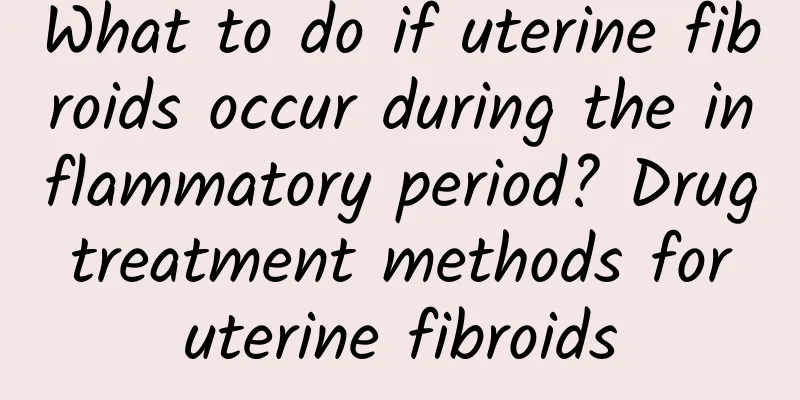What are the clinical manifestations of pelvic peritonitis?

|
In daily life, women should pay attention to the occurrence of pelvic peritonitis. Pelvic peritonitis is a very harmful disease. After the disease occurs, it will also cause abdominal pain, which is very harmful to women's bodies. Therefore, we should be alert to the occurrence of this disease and regulate it effectively to avoid causing more pain. So, what are the symptoms of pelvic peritonitis in women? When the female internal reproductive organs (such as the uterus, fallopian tubes, ovaries, etc.) and the surrounding connective tissue and pelvic peritoneum are inflamed, it is called pelvic peritonitis. The pathogens that cause pelvic peritonitis are Staphylococcus, Escherichia coli, Streptococcus, anaerobic bacteria, and sexually transmitted pathogens such as herpes virus, Chlamydia trachomatis and Mycoplasma. The main transmission routes are: transmission through blood circulation, spread through the lymphatic system, spread along the genital mucosa, and direct spread after infection of adjacent organs. The systemic symptoms of chronic pelvic peritonitis are sometimes low fever and fatigue. Some patients develop neurasthenia symptoms due to the long course of the disease, such as insomnia, lack of energy, and general discomfort. The lower abdomen is distended and painful, and the lumbar and sacral pain is often aggravated after fatigue, sexual intercourse, and before and after menstruation. Chronic inflammation leads to pelvic congestion and menorrhagia. When the ovarian function is damaged, menstrual disorders will occur. When the fallopian tubes are blocked by adhesions, it will lead to infertility. Acute pelvic peritonitis has a history of acute infection, with dull pain in the lower abdomen, muscle tension, tenderness and rebound pain, accompanied by a fast heart rate, fever, and a large amount of purulent vaginal discharge. In severe cases, there may be high fever, headache, chills, loss of appetite, a large amount of yellow leucorrhea with odor, abdominal distension, tenderness, and lower back pain. In peritonitis, there may be nausea, abdominal distension, vomiting, diarrhea, etc. When pus is formed, there may be a lower abdominal mass and local compression and irritation symptoms. If the mass is located in the front, there may be difficulty urinating, frequent urination, and painful urination. If the mass is located in the back, it may cause diarrhea. Acute inflammation may cause serious consequences such as diffuse peritonitis, sepsis, and even septic shock. Chronic inflammation affects normal work and life as well as physical and mental health due to long-term treatment and repeated attacks. Pelvic peritonitis is a common gynecological disease. It is divided into acute pelvic peritonitis and chronic pelvic peritonitis. The inflammation can be confined to one part or several parts at the same time. When the disease occurs, the whole body usually has low fever, pain, and fatigue. Some patients develop neurasthenia symptoms such as insomnia, lack of energy, and general discomfort due to the long course of the disease. The lower abdomen is distended, painful, and the lumbosacral region is often aggravated after fatigue, sexual intercourse, and before and after menstruation. In addition, when pelvic peritonitis is severe, an abscess may form between the uterus and the rectum. After the inflammation subsides, adhesions may form, changing the relationship between the ovary and the fallopian tube, causing adhesion and closure of the fallopian tube fimbria, and thickening and hardening of the capsule on the surface of the ovary, so that the egg cannot be discharged normally. It may also affect the transport function of the fallopian tube and cause infertility. Pelvic peritonitis with mild symptoms can be treated with abortion. However, if it is acute pelvic peritonitis or acute exacerbation of chronic pelvic peritonitis, surgery is not suitable. In general, patients with pelvic peritonitis should treat the inflammation before having an abortion. If a woman has an abortion while suffering from gynecological inflammation, it is likely to cause a wider range of inflammation. Therefore, pelvic peritonitis must be treated with anti-infection before abortion, and strict attention must be paid after the operation. Therefore, before having an abortion, you must check whether there is inflammation. If there is, you must cure the inflammation before you can have an abortion. If the situation is urgent, you must first reduce the inflammation through treatment, and then perform thorough treatment after the abortion. Don't be careless. Experts remind: I hope women will understand this disease as soon as possible, and pay attention to adjustment methods in daily life, and pay attention to more rest. Experts say that after suffering from pelvic peritonitis, women should pay attention to physical conditioning, and pay attention to care methods to avoid bacterial infection. The occurrence of pelvic peritonitis is related to many factors, especially bacterial infection. |
<<: What are the early symptoms of pelvic peritonitis?
>>: What are the specific symptoms of pelvic peritonitis
Recommend
Can drinking salt water help you lose weight? Famous weight loss doctor: Be careful of the high risk of regaining weight
Can drinking salt water help you lose weight? The...
What is it like to have uterine fibroids? Will uterine fibroids lead to infertility?
Uterine fibroids (Hysteromyoma) Uterine leiomyoma...
Just one cup! 3 Pre-workout Drinks That Can Burn Fat Easily
Do you feel that it is difficult to keep the body...
One cup of pearl fruit shake cup is equal to one bowl of rice
If you want to control your weight, stay away fro...
What is the difference between uterine cyst and fibroids? Which one is more serious?
Uterine adenoma and fibroids are common gynecolog...
Never made public! The solution for running girls to get a perky butt
Everyone is crazy about road running. From time t...
Is it good to eat tomatoes during menstruation? Pay attention to the 7 taboos during menstruation
During menstruation, women should pay attention t...
Preparation for 3mm chocolate cyst surgery
Usually, the main cause of chocolate cysts is the...
Why do women get uterine fibroids? What are the predisposing factors of uterine fibroids?
Uterine fibroids mostly occur in women aged 30-50...
Big battle to lose weight before marriage! 7-Day Slimming Soup to Clear the Stomach
Men should get married when they are old enough, ...
Getting thinner the more you wear? Anti-cellulite jeans and fat burning
Jeans are an everlasting fashion item. In additio...
What are the 4 symptoms of female ovarian cysts?
What are the symptoms of female ovarian cysts? 4 ...
Common medication misunderstandings in patients with hyperprolactinemia
Hyperprolactinemia is a common disease, and Chine...
Ectopic pregnancy is usually caused by pelvic tumor compression.
Ectopic pregnancy is usually caused by pelvic tum...
What should not be eaten during irregular menstruation
Health care for irregular menstruation, what shou...









